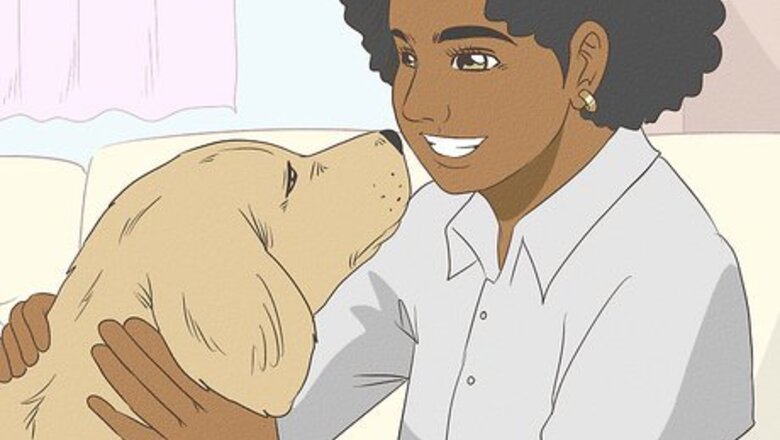
views
Training Individual Dogs

House your dogs separately, as a temporary measure. Before you even begin training your dogs, you’re going to have to adopt them. However, when you adopt them, make sure to house them separately. This way, you'll be able to train them and incorporate them into your family individually. The best way is to adopt one dog at a time. Make sure each dog gets love and attention while they are isolated from each other. Make sure the period of isolation is not too long. Isolation should not occur for more than a couple weeks at the very most and it should be done in stages. Never conduct total isolation. While you may be isolating your dog from other dogs, do not isolate him or her from people.
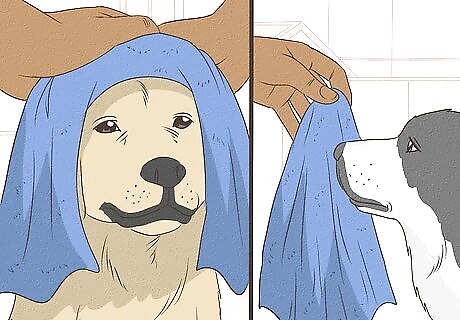
Integrate new dogs into the group slowly. It is important to make a gradual transition from housing your dogs separately to keeping them together. To do this, you can do things like using a scent handshake, allowing certain dogs to roam part of the house, and allowing the new dog(s) to greet established dogs under supervision. To use a scent handshake, rub a towel or old t-shirt on one of the dogs, and then let the other dogs sniff it. Let your established dogs roam most of the house freely, but let a new dog only have access to one or two rooms at first. When you are ready to introduce a new dog, make sure that you do so while supervising the dogs.
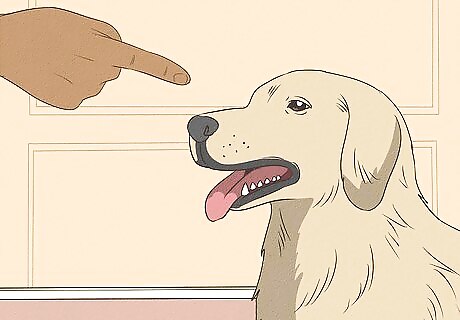
Assert your leadership and work with each dog individually. The first step in training a calm and submissive pack is to begin one dog at a time and assert your leadership. Beginning with one dog will enable you to master your relationship with that dog and to build a relationship in which you are the dominant party. Always talk to your dog in a commanding tone. Always keep calm (but be assertive) when you are training individual dogs. Avoid trying to train multiple dogs at one time, since they might try to establish themselves as leader or build a hierarchy that undermines your position.
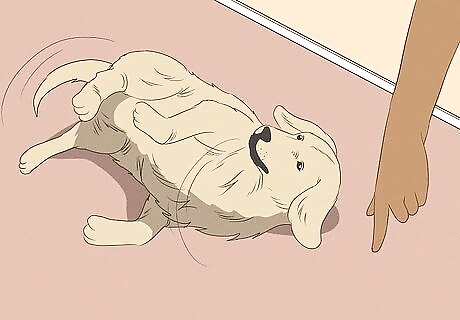
Train your dog with verbal commands. During and after you’ve established your role as leader, you need to begin to train your dogs with verbal commands. Verbal commands are an extremely important tool in your arsenal of creating a calm and submissive pack. Master commands such as “sit,” “down,” and “no.” Move on to more complex commands such as “roll over”,” “run,” and “play dead.” Make sure your dog can understand verbal rewards and positive reinforcement such as “good boy” or “good girl.”
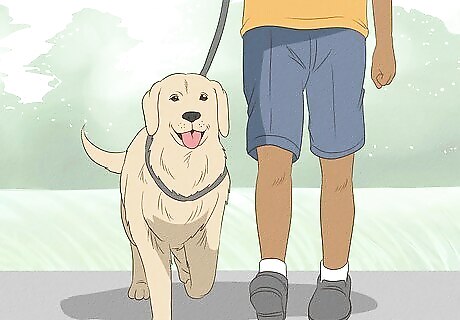
Set boundaries. After you’ve begun building a relationship with an individual dog based on you being the leader, you should quickly begin to set boundaries. Setting boundaries will help create a calm and submissive pack. Make sure to teach your dog to heel. Your dog may pull on the leash when you walk him because he thinks he can get somewhere faster by pulling, not because he is asserting his dominance. To correct this, try stopping each time he pulls or even walking in the opposite direction when he pulls. Perhaps the most important boundary is the way you act. If you act calm and are assertive, your dog and your larger pack should be calm and submissive. They should emulate the way you behave. Make sure your dogs respect your personal space, too. Jumping up on you, sitting on you, or getting in your face are signs of bad manners and inadequate training. Your dogs need to be able to read your body language in addition to understanding your verbal commands. They should be able to understand if you are unhappy that they are violating the boundaries you have established.
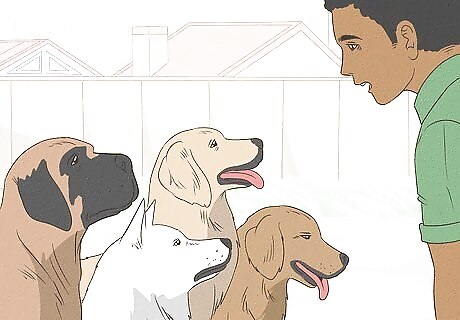
Communicate with the group as a whole. Communication is key in creating a calm and submissive group. As a result, you need to be able to master the art of communication with individual dogs and the group as a whole. Make sure to: Teach your dogs a wide array of verbal commands that they can take. Make sure they obey commands as "sit" or "stay" as a group. Know how to signal to your dogs non-verbally. Listen and watch your dogs. Often, your dogs will communicate with you both verbally and nonverbally as well. Looking for their communication is almost as important as your way of communicating with them.
Creating a Successful Group
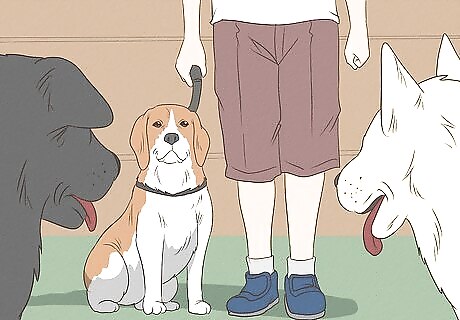
Integrate each dog into the group one at a time. Once you’ve trained each dog individually, you need to start integrating the individuals into your group. As leader, you are the core of the group. Making sure you integrate one dog at a time is a sure fire way to maintain your leadership. Integration should be a positive and calm event. Dogs should not freak out or growl at each other. If you’ve done your job and have established yourself as leader, it should go off without a hitch. Once each dog has been trained individually, progress to training two dogs together as a group. Once this has been mastered, continue adding dogs to training sessions until all are calm and submissive together. If you have any potentially problematic dogs, integrate them last. You don’t want them setting the tone for the entire group.
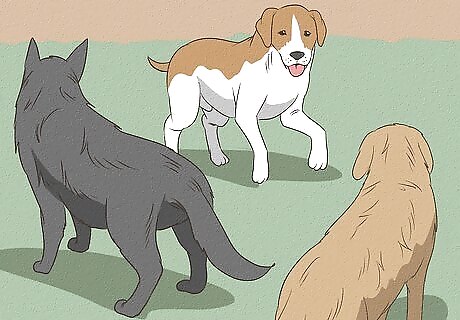
Observe how the dogs interact with each other. A very important part of training and maintaining a calm and submissive dog pack is knowing your pack. If you don’t know your pack and the specific personalities of each dog, you won’t be able to manage your pack and exert your dominance as alpha. Observe your group and see how they interact. You could write this in a list, too: Sawyer see another dog, begins to get aggressive; Huck then jumps the fence; Bella barks continuously. Situations can escalate because each dog prompts bad behaviors in the others. Spend time with each dog individually to get an idea of each dog’s personality. Think about your dogs not just as a group, but as individuals within a group.
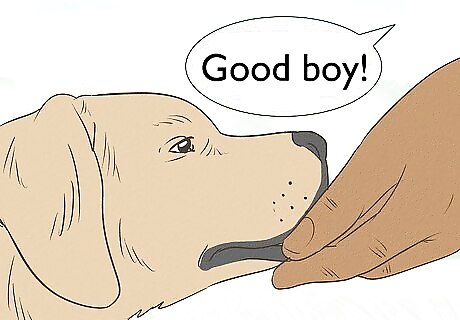
Reward your dogs for good behavior. Rewarding good behavior is essential in creating a calm and submissive group. If you don’t reward your dogs, then your dogs will be confused about what is acceptable and unacceptable behavior. They also won’t try as hard to please you, as their leader. Reward your dogs with treats and food. Reward your dogs verbally. Say things like “good boy” or “good girl.” Reward your dogs physically. After your dogs do something good, tell them they are “good” and then pet them or pat them. Positive reinforcement is much more effective than negative reinforcement.
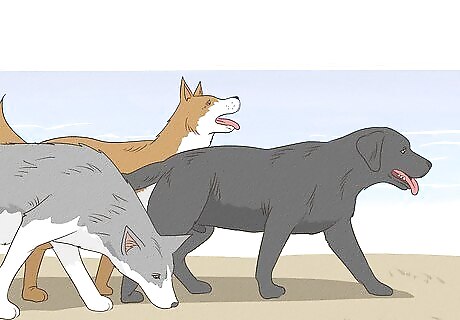
Establish a hierarchy. After you’ve asserted yourself as leader, you should begin to create a hierarchy in your group of dogs. A hierarchy will help you maintain a calm and submissive group. Establishing hierarchy does not involve specific training, but results from the way you treat your dogs and from natural dynamics within the group. Feeding dogs in order is a good way to establish hierarchy. Allow your lead dog to walk first or ahead of other dogs. Praise your lead dog first. Make sure that the dogs you pick to be higher in the pack are the dogs that respect your authority the most and are very good at taking commands and following your example.
Troubleshooting Problems
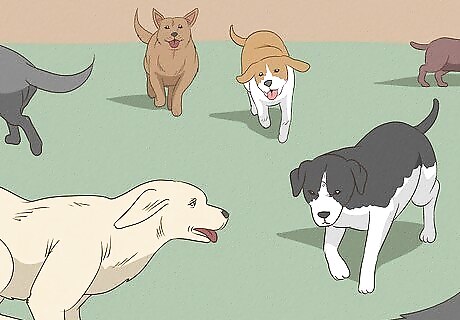
Observe your dogs as a group. The best way to troubleshoot issues is to spend some time observing the group interact and taking direction from you. After you’ve observed your dogs for a while, you’ll have a good idea of problems and what needs to be done to improve your pack and make it more submissive and calm. Notice first what "problems" each specific dog has and make a written list with the worst problem at the top of the list. The list might say Sawyer is aggressive towards other dogs, Huck jumps fences, Bella barks all the time, and so on. If you notice that the group has problems that stem from how the dogs interact with each other, the issue may be that you’re not exerting yourself as leader well enough. Spend more time working with each dog and asserting your leadership.

Target the specific problem that undermines your calm and submissive group. Pick the problem that begins the situation and address it first. Targeting a specific problem instead of targeting a specific dog or the pack in general is usually the best way to trouble shoot problems in a group of dogs. If the problem is an individual dog’s actions, target that dog for retraining. So, if Sawyer is aggressive towards other dogs and that is what creates a group situation, start by training him not to be aggressive through one-on-one training. If the problem is the way two dogs interact, work with each dog individually, then work with them as a team. If one problem is potentially dangerous to another human or animal, always address it first.
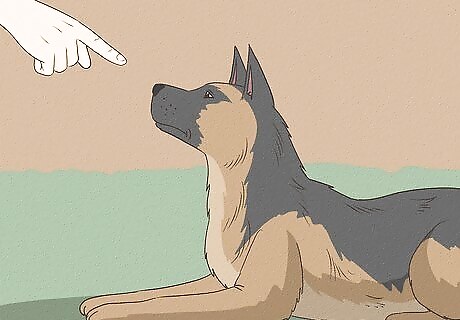
Retrain individual dogs, if one or more are not calm and/or submissive. If one of your dogs still tries to intimidate other dogs after you’ve integrated him or her into the group, then you will need to work on retraining that dog. This way, when you are successful in retraining the dog, he or she can be reintegrated into the group. Work on avoiding the dog’s triggers. However, keep in mind that it is not necessary to remove him from the group. Consult a trained animal behaviorist for advice and help with training a dog that is having trouble adjusting to the group or continues acting aggressive.
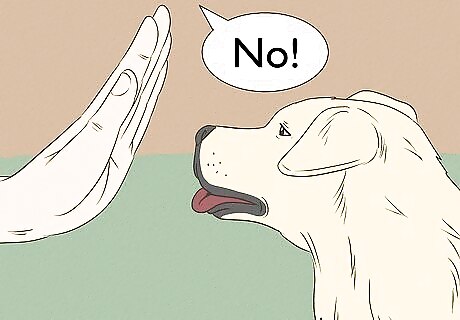
Reprimand individual dogs, not the group. When an individual dog does something wrong or behaves poorly, reprimand that individual dog. If you reprimand the group, the dogs who are behaving appropriately may be confused about what they did wrong. As a result, always work with the problem dog to correct his or her behavior. Make sure to deal with problems quickly when they happen. In most cases, dogs have short memories. Issues need to be dealt with quickly. Reprimand verbally with commands like "no" or "bad." Never strike your dog. Use your hands, but not with anger. Use your hands and body to instruct the dog, not to punish him or her. For example, use your hands to guide your dogs in a certain action or direction. But remember, always move your hands slowly.



















Comments
0 comment